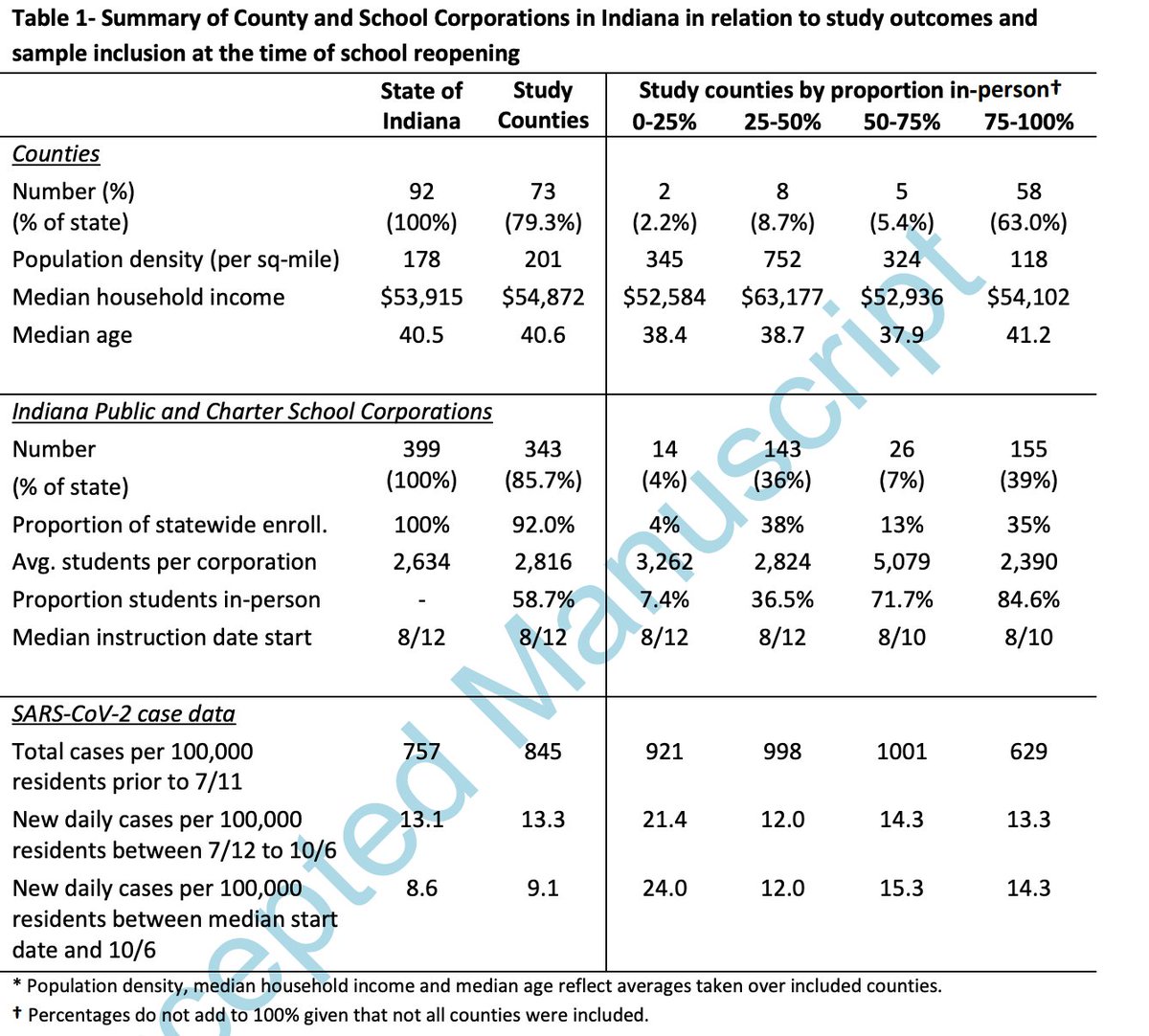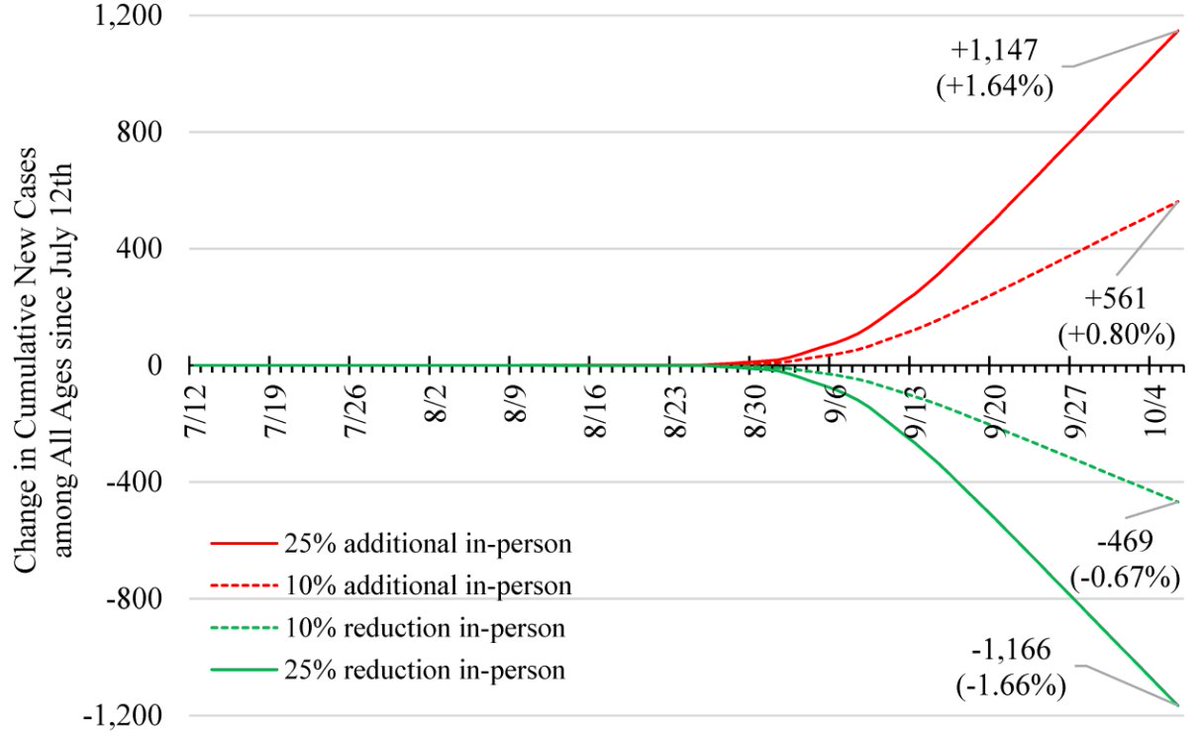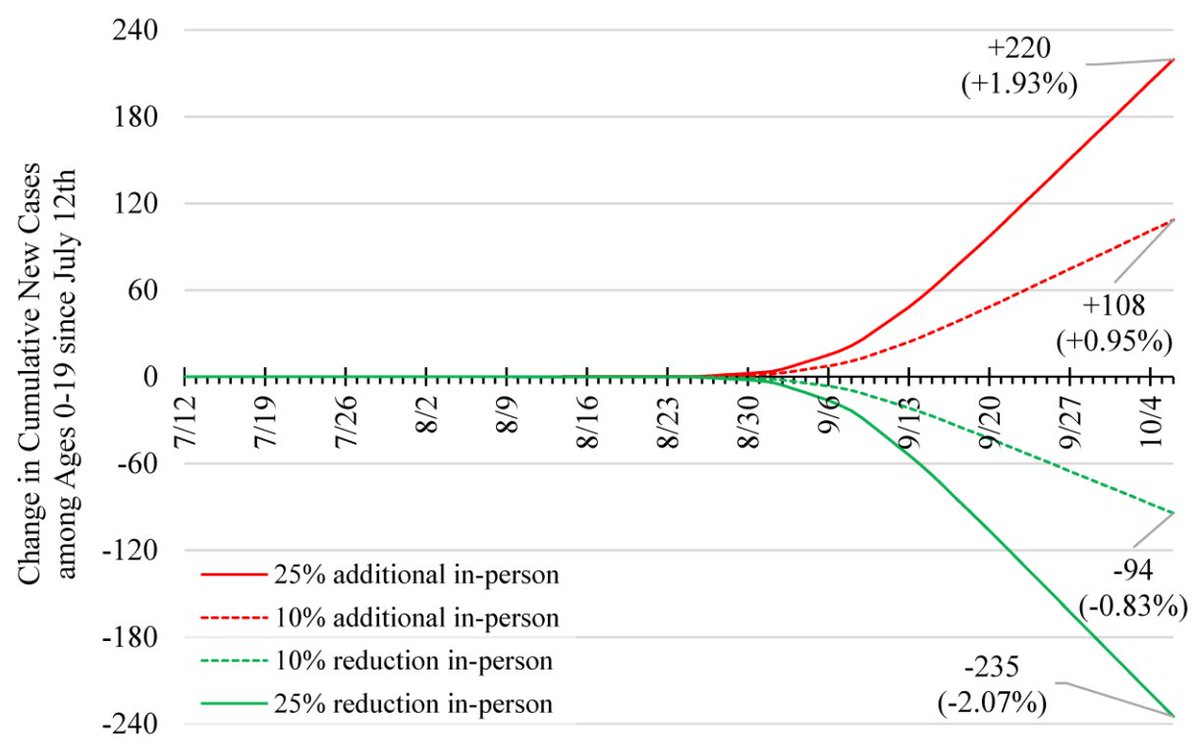
This week our manuscript on the role of in-person school on community spread of SARS-CoV-2 in Indiana was published online in Clinical Infectious Diseases.
This thread will outline our findings.
manuscript: bit.ly/3mIXvC5
1/17
This thread will outline our findings.
manuscript: bit.ly/3mIXvC5
1/17
This was a truly interdisciplinary effort.
@micahpollak (@iunorthwest): economics
Jeong Jang (@IUmedschool): biostats
@rebekah_roll (@IUmedschool): data gathering
Mark Sperling (@iunorthwest education): education
@deliriumkahn: analysis
I just sort of herded cats.
2/17
@micahpollak (@iunorthwest): economics
Jeong Jang (@IUmedschool): biostats
@rebekah_roll (@IUmedschool): data gathering
Mark Sperling (@iunorthwest education): education
@deliriumkahn: analysis
I just sort of herded cats.
2/17
I’m going to target this thread to a wide audience, so my description of our work may leave some wanting more detail. The detail is in the online version and the supplement. Happy to answer any questions on the work as they come up.
3/17
3/17
Much work on #COVID19 and schools has focused on spread within schools. But given #COVID19’s transmission and morbidity characteristics, we thought it more important to evaluate the role of in-person school on community transmission.
So this is what we did.
4/17
So this is what we did.
4/17
Indiana had a statewide mask mandate and reopening plan; school reopening was left to school corporations.
Plans varied widely- full in-person, full virtual, hybrid systems.
@StateHealthIN provided county-level case data, so we used this as our outcome measure.
5/17
Plans varied widely- full in-person, full virtual, hybrid systems.
@StateHealthIN provided county-level case data, so we used this as our outcome measure.
5/17
We had school corporation data (all 399!) including the number of pupils, location, etc- we mapped these onto counties within the state to link in-person school with county-level spread.
We needed start dates and % of students starting school in-person vs virtually.
6/17
We needed start dates and % of students starting school in-person vs virtually.
6/17
This was a big task- we were able to get data from most school corporations and included those counties for which we had data for 50% of the students. We were able to include 73/92 counties, accounting for 86% of school corporations and 91% of students in the state.
7/17
7/17

53% of schools opened with a majority of pupils in-person, 47% with a majority e-learning. This study took place at a time when there were approximately 10 daily new cases per 100,000 residents statewide, and this remained somewhat stable through the study period.
8/17
8/17

We used the proportion of in-person students to evaluate the association with daily new cases 28 days after schools opened in that county (this is actually a pretty nuanced evaluation, as all schools did not open at the same time).
9/17
9/17
This methodology allowed us to control for geographic and time factors in order to try and eliminate noise from these as much as possible. We did a bunch of stuff to try and eliminate bias and confounders as much as we could- you can find these in the paper/supplement.
10/17
10/17
We found a statistically significant relationship between the proportion of in-person learning and new daily cases 28 days later in the general population and in the 0-19 age group.
But this led to a very small change in proportion to overall daily new cases.
11/17
But this led to a very small change in proportion to overall daily new cases.
11/17

This suggests if all schools in Indiana increased in-person instruction by 25%, total cases would have increased by 1,147 over the entire study period.
The actual increase during that time was 70,021 new cases. So this would have increased cases in the state by 1.64%.
12/17
The actual increase during that time was 70,021 new cases. So this would have increased cases in the state by 1.64%.
12/17

We found a similar change in the 0-19 age group. A 25-percentage point increase of in-person instruction would increase daily new cases over the study period by 1.93% of total new cases in that age group.
13/17
13/17

This work is not perfect and has the limitations of any observational ecological study.
It was also done at a time before the variants became dominant.
But we think it helps provide more data regarding the risk of in-person school in the COVID-19 era.
14/17
It was also done at a time before the variants became dominant.
But we think it helps provide more data regarding the risk of in-person school in the COVID-19 era.
14/17
Conclusion: This work suggests that in Indiana, in-person instruction was associated with a subsequent increase in community-wide SARS-CoV-2, but this increase was quite small in proportion to overall daily new cases.
15/17
15/17
If I am honest, I was surprised by these results. I think most of us thought in-person school would be associated with a higher proportion of new cases.
16/17
16/17
A huge thanks to @StateHealthIN and @IndianaMPH and @Regenstrief for their data transparency that has helped lead the state of Indiana through this pandemic and allowed work like this to come to fruition.
17/17
17/17
• • •
Missing some Tweet in this thread? You can try to
force a refresh


